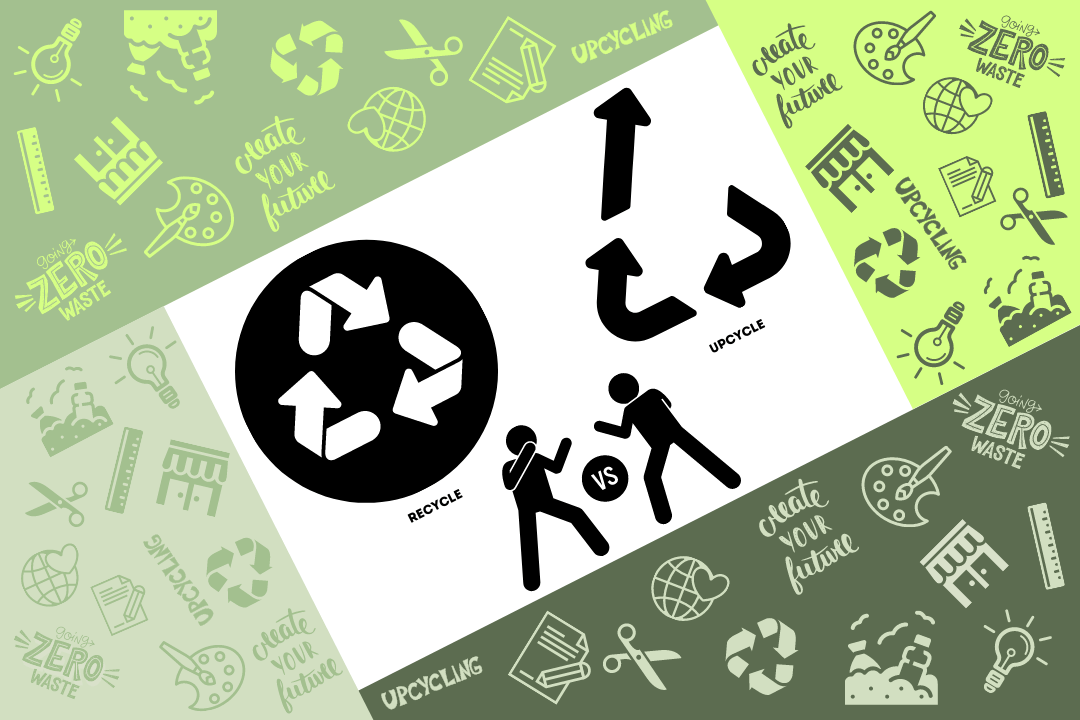We are all familiar with recycling, but do you know what differentiates recycling from upcycling? Let’s start with a couple of definitions:
The biggest difference is that upcycling creates an item of higher value while recycling usually causes a loss or a maintenance of a value. Looking at it this way, recycling poses a bit of an economic conundrum-especially when it comes to cheaper virgin material such as plastics.
There are usually more steps in a recycling process then in a virgin manufacturing facility. Let’s take water bottles as an example. To create a new plastic water bottle, pre- production plastic beads (known as nurdles) are fed into a plastic molder. The beads are heated to their melting temperature and then forced into a mold creating the water bottle itself. It’s a pretty straight-forward process of receiving clean raw materials, feeding them into manufacturing equipment and finally, gathering the finished product and checking for quality control.
Now, let’s look at the same water bottle but now recycled. First, clean post-consumer materials must be collected. The used plastic bottles must now be sorted, cleaned/sanitized, shredded and prepared to be processed in a plastic molder. Once these materials are collected, cleaned, processed, and prepped, they are now ready to begin a new life as another water bottle. Keep in mind, that each of the processes requires resources and also results in the loss of some of the initial material. The more you look into the economics of plastics recycling, the more you can understand why it is not a solution to our plastic problem and why it is not widely done.
What all this tells us is that a recycled nurdle costs more than a brand-new one. A company would need to be willing (in most cases) to reduce profits in order to utilize recycled plastics. In addition, there is always the slight concern when it comes to the purity and integrity of post-consumer plastics. Therefore, a manufacturer’s only real motivation to support recycling must be a philanthropic one –good luck selling that to most shareholders.
The concept of upcycling, however, is to take a material and elevate it to an item of greater value. For example, taking old bicycle innertubes and turning them into jewelry, wallets, and bags. Upcycling requires thinking out of the box and a willingness to experiment. In most cases, upcycling will also involve more handmade and detailed processes.
Additionally, I believe that recycling tends to promote consumerism “as is” while upcycling forces us to re-evaluate what we consider waste and what we throw away. In my personal experience, it is hard to justify “throwing” something away when you see its potential value and it is those moments that make me question my choices as a consumer.
However, I do not believe that upcycling is the solution to our global municipal solid waste crisis. Until we see increased producer responsibility and cradle-to-grave sustainable manufacturing habits, we will continue to see our landfills overflow and our oceans and lakes fill with “trash”. I can only hope that through our business and creations, we are able to help people change their own habits and question the options currently available to them. Companies and governments will only do better if we demand it from them and I don’t know about you, but I’m ready for a change! Remember, every dollar you spend, is a vote for or against the environment.
Mahalo for reading and being a part of #teamtrashionista! See you next post, Mattie Mae Larson 👋🏽
Instead of recycling, we upcycle plastic packaging into usable and wearable art:
Plastic-Fetti Zipper Pouches, Medium

$38.00
These zipper pouches are handmade using reclaimed, post-consumer, filmed plastics collected from local businesses and residents. We process these plastics into a new material and make all of our products by hand in our Hilo, Hawaii production studio. Each product made… Read More


